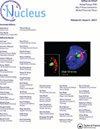Development of Predict-Observe-Explain (POE)-Based Physics Module by Utilizing QR Code and YouTube Learning Videos
IF 4.5
3区 生物学
Q3 CELL BIOLOGY
引用次数: 1
Abstract
Most of the students stated that studying Physics using relatively thick textbooks tended to be boring. This has an impact on unsatisfactory learning outcomes. The purpose of this research is to develop a product in the form of a module that is compiled using the Predict-Observe-Explain (POE) learning model with a combination of learning videos from YouTube, and analyze the feasibility level. The research method used is by making a module on temperature and heat material, which includes learning videos in the form of a QR code that can be scanned via a smartphone. The parameters analyzed include the results of the validation of experts who include material experts, media experts, and linguists. Another parameter that was measured as the level of student interest in the module, with a sample of 10 students from SMAN 1 Dramaga, SMA Bumi Sejahtera, and SMA Hanura. The results showed that the assessments of material experts, media experts, and linguists respectively were 3.83, 3.32, and 3.47 with the criteria of "very decent". The attractiveness test results for SMAN 1 Dramaga, SMA Bumi Sejahtera, and SMA Hanura were 3.57, 3.36 with the criteria of "very interesting" and 3.03 with the criteria of "attractive". Thus, it is concluded that the POE-based physics module by utilizing the QR code and YouTube learning videos is very feasible to be used as a learning medium.利用二维码和YouTube学习视频开发基于预测-观察-解释(POE)的物理模块
大多数学生表示,使用相对较厚的教科书学习物理往往很无聊。这对令人不满意的学习结果产生了影响。本研究的目的是利用预测-观察-解释(Predict-Observe-Explain, POE)学习模型,结合YouTube学习视频,以模块的形式开发产品,并分析其可行性水平。研究方法是制作一个关于温度和热材料的模块,其中包括可以通过智能手机扫描的二维码形式的学习视频。分析的参数包括专家验证的结果,包括材料专家、媒体专家和语言学家。另一个参数是学生对模块的兴趣水平,样本是来自sman1 Dramaga、smani Sejahtera和sman1 Hanura的10名学生。结果显示,材料专家、媒体专家和语言学家的得分分别为3.83分、3.32分和3.47分,得分标准为“非常不错”。SMA 1 Dramaga、SMA Bumi Sejahtera和SMA Hanura的吸引力测试结果为3.57,“非常有趣”标准为3.36,“吸引”标准为3.03。因此,基于poe的物理模块利用二维码和YouTube学习视频作为学习媒介是非常可行的。
本文章由计算机程序翻译,如有差异,请以英文原文为准。
求助全文
约1分钟内获得全文
求助全文
来源期刊

Nucleus
CELL BIOLOGY-
CiteScore
5.60
自引率
5.40%
发文量
16
审稿时长
13 weeks
期刊介绍:
Nucleus is a fully open access peer-reviewed journal. All articles will (if accepted) be available for anyone to read anywhere, at any time immediately on publication.
Aims & Scope: The eukaryotic cell nucleus is more than a storage organelle for genomic DNA. It is involved in critical steps of cell signaling and gene regulation, as well as the maintenance of genome stability, including DNA replication and DNA damage repair. These activities heavily depend on the spatial and temporal “functional” organization of the nucleus and its integration into the complex meshwork of cellular scaffolding.
Nucleus provides a platform for presenting and discussing cutting-edge research on all aspects of biology of the cell nucleus. It brings together a multidisciplinary community of scientists working in the areas of:
• Nuclear structure and dynamics
• Subnuclear organelles
• Chromatin organization
• Nuclear transport
• DNA replication and DNA damage repair
• Gene expression and RNA processing
• Nucleus in signaling and development
Nucleus offers a variety of paper formats including:
• Original Research articles
• Short Reports
• Reviews
• Commentaries
• Extra Views
• Methods manuscripts.
 求助内容:
求助内容: 应助结果提醒方式:
应助结果提醒方式:


